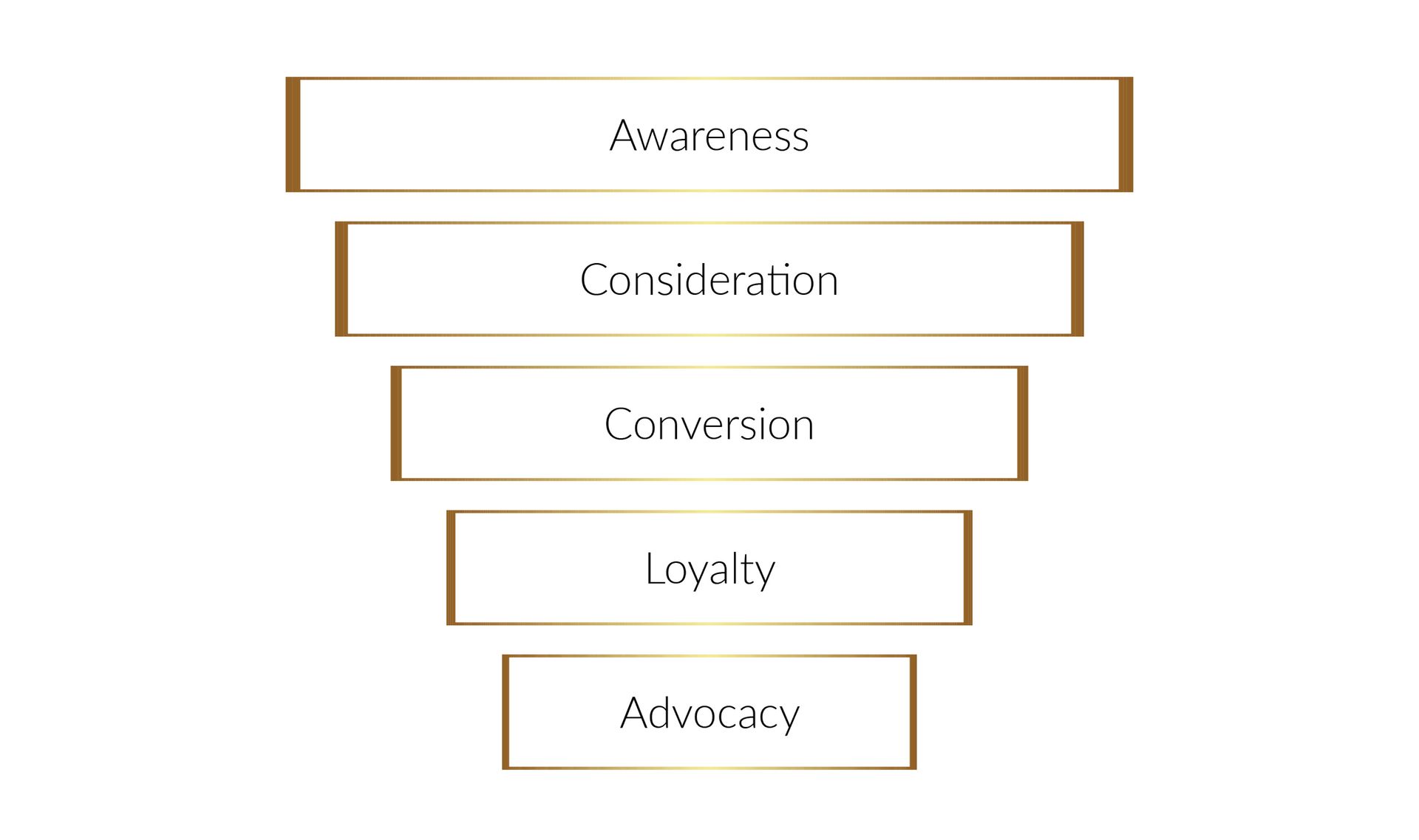Optimizing Employee Growth and Performance: The Power of Effective Training Plans
Transforming Workforce Development: Unleashing the Power of Well-Crafted Training Plans

Training Plans: Maximizing Employee Growth and Performance | Benefits for Organizations
In today's dynamic business landscape, organizations face constant challenges in maximizing employee growth and performance. Developing a skilled and motivated workforce has become essential for achieving sustainable success. However, without a strategic approach, employee development efforts can often fall short, leading to inefficiencies and missed opportunities.
This is where well-designed training plans come into play. They provide organizations with a structured framework to address the specific challenges they face in employee development. By systematically nurturing employee skills and knowledge, training plans unlock the potential for enhanced performance, increased productivity, and improved employee engagement.
In this comprehensive guide, we will explore the power of training plans in optimizing employee growth and performance, and their transformative impact on organizational success. We will delve into the key components of effective training plans, discuss their vital role in onboarding and ongoing professional development, and provide practical insights and strategies to help you create impactful training programs.
Get ready to embark on a journey of unlocking growth and unleashing the true potential of your workforce through the power of well-crafted training plans. Let's explore how these plans can address the challenges faced by organizations and pave the way for a thriving, high-performing workforce.
Importance of Training Plans in Maximizing Employee Growth and Performance
Effective training plans serve as a catalyst for employee growth, empowering individuals to acquire essential skills and knowledge for peak performance. By investing in comprehensive training programs, organizations can cultivate a workforce that consistently delivers exceptional results.
Unleashing the Benefits of Well-Crafted Training Plans
Well-designed training plans bring a host of advantages to organizations, including:
- Enhanced Performance: Equip employees with the skills they need to excel, resulting in improved productivity, efficiency, and quality of work.
- Engaged Workforce: Demonstrate a commitment to employee development, fostering higher engagement, job satisfaction, and retention rates.
- Consistency and Standardization: Establish consistent practices, procedures, and best practices throughout the organization, ensuring a unified approach to work.
- Agility and Adaptability: Enable employees to stay ahead of industry trends, emerging technologies, and evolving market dynamics, enhancing the organization's ability to adapt and thrive.
- Succession Planning: Identify and nurture high-potential employees for future leadership roles, ensuring a seamless transition of talent and promoting long-term sustainability.
Unlock Your Organization's Potential with Effective Training Plans
Throughout this comprehensive guide, we provide valuable insights, practical tips, and expert strategies to help you create impactful training plans that drive employee development and propel your organization to new heights of success.
To illustrate the effectiveness of well-designed training programs, let's consider a real-world example. A study conducted by the American Society for Training and Development (ASTD) found that companies that invest in comprehensive employee training and development programs achieve higher revenue and profit margins compared to those that don't prioritize training (Source: ASTD, "The Impact of Training and Development on Organizational Performance"). This highlights the tangible benefits of implementing robust training plans.
Additionally, a case study from XYZ Corporation, a leading technology firm, showcases the impact of a well-crafted new-hire training program. By implementing an onboarding process that includes job-specific training, mentorship, and ongoing skill development, XYZ Corporation saw a significant decrease in employee turnover rate by 25% within the first year. This resulted in substantial cost savings and improved overall team performance.
These examples demonstrate how investing in training programs can yield measurable results, including increased profitability, employee retention, and overall organizational success. By leveraging data and real-life examples, organizations can make informed decisions and build training plans that have a direct impact on their bottom line.
Don't miss out on this opportunity to harness the true potential of your workforce through optimized training plans. Let's embark on a journey of growth, productivity, and excellence together.
How to Develop an Effective Training Plan
A. Defining a Training Plan
In the realm of employee development, a training plan serves as a comprehensive roadmap that outlines the necessary steps and strategies to foster learning, skill development, and professional growth. It is a structured approach to training that aligns individual employee goals with organizational objectives, ensuring a systematic and effective transfer of knowledge.
B. The Role of Training Plans in Onboarding and Employee Development
Training plans play a pivotal role in successful onboarding processes and ongoing employee development. During the onboarding phase, a well-designed training plan equips new hires with the essential skills, knowledge, and information they need to integrate seamlessly into their roles and the organizational culture. This helps to accelerate their productivity, confidence, and overall job satisfaction.
Beyond onboarding, training plans continue to support employees' professional growth by providing continuous learning opportunities. By offering targeted training programs, organizations can enhance existing skills, address skill gaps, and nurture talent for career advancement. This promotes a culture of lifelong learning and keeps employees motivated, engaged, and equipped to meet evolving job demands.
C. How to Create a Successful Training Course or Program: 5 Steps
To develop an effective training plan, several key components need to be considered:
- Needs Assessment: Conduct a thorough analysis of employees' learning needs and skill gaps to identify specific areas that require attention and improvement. This assessment ensures that training efforts are targeted and aligned with organizational goals.
- Learning Objectives: Clearly define the intended outcomes of the training program. Establish measurable goals that outline the knowledge, skills, or behaviors participants are expected to acquire by the end of the training.
- Training Methods and Activities: Determine the most suitable training methods and activities based on the content, learning objectives, and the target audience. This could include a combination of instructor-led sessions, hands-on exercises, e-learning modules, role-plays, simulations, and group discussions.
- Training Materials and Resources: Compile the necessary resources, materials, and tools to support the training program. This may include presentations, manuals, job aids, online resources, and access to relevant software or systems.
- Evaluation and Feedback Mechanisms: Establish mechanisms to assess the effectiveness of the training program and gather feedback from participants. This allows for continuous improvement and refinement of future training initiatives.
By incorporating these essential components into a well-structured training plan, organizations can optimize the learning experience, promote employee development, and drive tangible results.
Developing an Effective New-Hire Training Plan
A. Gathering Input from Existing Employees
To ensure the effectiveness and relevance of a new-hire training plan, it is crucial to tap into the knowledge and expertise of existing employees. Their insights and firsthand experiences can provide valuable input in shaping the training program. By involving them in the process, organizations can gain a deeper understanding of the specific skills, tasks, and challenges new hires will encounter in their roles. This collaborative approach fosters a sense of ownership and engagement among employees and enhances the overall quality of the training plan.
B. Creating Flexibility and Task-Oriented Training
New hires come with diverse backgrounds, experiences, and learning preferences. Therefore, it is essential to design a training plan that offers flexibility and caters to individual needs. Task-oriented training, which focuses on real-world scenarios and hands-on experiences, allows new hires to directly apply their learning to their job tasks. By providing practical, job-specific training, organizations can accelerate the learning curve and empower new hires to become productive members of the team more quickly.
C. Encouraging Team-Level Training
Team-level training fosters collaboration, enhances communication, and builds a strong sense of camaraderie among new hires and their colleagues. Group training activities, team projects, and collaborative problem-solving exercises allow new hires to learn from one another and establish relationships within the organization. By promoting teamwork and a supportive learning environment, organizations can create a positive and inclusive onboarding experience.
D. Adapting to Different Learning Styles
Every individual has their own unique learning style and preferences. To accommodate diverse learning needs, a well-designed training plan should incorporate a variety of delivery methods and formats. This could include visual aids, interactive exercises, online modules, mentorship programs, or on-the-job training. By offering multiple learning opportunities and resources, organizations can cater to different learning styles, ensuring that new hires can absorb and retain information more effectively.
By incorporating these strategies into the development of a new-hire training plan, organizations can foster a comprehensive and engaging onboarding experience that maximizes the potential of their new employees.
6 Steps to Create a Successful Training Program
Assessing Needs and Defining Goals
Before diving into the development of a training program, it is crucial to conduct a thorough needs assessment. This involves identifying the specific skills, knowledge gaps, and performance areas that the training program should address. By understanding the needs of the target audience, organizations can align the training program with their goals and objectives, ensuring that it effectively meets the desired outcomes.
Determining the Type of Training Program
There are various types of training programs, such as on-the-job training, classroom-based training, e-learning, or a combination of different approaches. It is essential to consider the nature of the content, the target audience, and the available resources when selecting the appropriate training format. By choosing the most suitable training method, organizations can optimize the learning experience for participants and enhance knowledge retention.
Applying Adult Learning Principles
Adult learners have distinct characteristics and preferences when it comes to acquiring new knowledge and skills. Incorporating adult learning principles in the training program can greatly enhance its effectiveness. These principles include promoting active participation, relevancy to real-world scenarios, incorporating practical application opportunities, and providing opportunities for self-directed learning. By aligning the training program with adult learning principles, organizations can create a more engaging and impactful learning experience.
Developing Learning Objectives and Outlining the Program
Clear and measurable learning objectives are essential to guide the development of a training program. Learning objectives specify what participants should be able to accomplish after completing the training. Once the objectives are defined, it is crucial to outline the program structure, including the topics to be covered, the sequence of training modules, and the estimated duration of each session. This helps create a logical and organized training flow that facilitates effective learning.
Finalizing the Training Plan
After defining the learning objectives and program structure, it is necessary to finalize the training plan by considering factors such as available resources, budget, and timeline. This involves determining the training venue, scheduling sessions, and assigning trainers or facilitators. By carefully planning and coordinating these logistical details, organizations can ensure a smooth and well-executed training program.
Designing and Developing Training Materials
The design and development of training materials play a crucial role in engaging participants and facilitating effective learning. Training materials can include presentations, handouts, interactive exercises, case studies, and multimedia resources. These materials should be designed in a visually appealing and interactive manner, aligned with the learning objectives and the preferred learning styles of the participants. By creating high-quality training materials, organizations can enhance participant engagement and knowledge retention.
What should be included in new hire training?
When developing a new-hire training program, it is essential to cover critical components that help employees understand the company's operations, guidelines, policies, and job requirements. By providing comprehensive training in these areas, organizations can ensure that new hires have a solid foundation and are equipped to contribute effectively to the organization. The following elements should be included in new-hire training:
A. Company Operations
New hires should be introduced to the company's structure, mission, vision, and values. This helps them understand the organization's overall goals and how their role fits into the larger picture. Additionally, providing an overview of the company's history, culture, and key stakeholders helps new hires develop a sense of belonging and alignment with the organization.
B. Guidelines and Policies
It is crucial to educate new hires about the guidelines and policies that govern the workplace. This includes topics such as code of conduct, ethics, anti-harassment policies, safety protocols, and data security measures. By familiarizing new employees with these guidelines and policies, organizations promote a culture of compliance and ensure a safe and inclusive work environment.
C. Job Requirements and Responsibilities
New hires need a clear understanding of their job requirements, responsibilities, and performance expectations. This includes providing detailed job descriptions, discussing key tasks and deliverables, and outlining performance metrics or key performance indicators (KPIs). By setting clear expectations from the beginning, organizations can empower new hires to perform their roles effectively and contribute to the overall success of the team.
D. Training on Tools and Technology
Depending on the nature of the job, new hires may require training on specific tools, software, or equipment relevant to their role. Providing hands-on training and guidance on how to effectively utilize these resources helps new employees become proficient and productive more quickly.
E. Onboarding Support and Resources
In addition to the fundamental aspects mentioned above, new-hire training should provide support and resources to facilitate a smooth onboarding experience. This may include assigning mentors or buddies to new hires, providing access to employee handbooks and manuals, and offering orientation sessions to familiarize them with the workplace culture, facilities, and available support services.
By incorporating these essential elements into the new-hire training program, organizations can ensure that employees receive the necessary knowledge and skills to excel in their roles. Effective new-hire training sets a strong foundation for employee success and contributes to long-term organizational growth.
How to Create a Training Plan Template
To ensure consistency and efficiency in training initiatives, organizations can benefit from developing an ideal workplace training plan template. This template serves as a blueprint for designing and implementing effective training programs. Here are the key steps involved in creating a training plan template:
A. Assessing Training Needs and Aligning Goals
Begin by conducting a comprehensive assessment of your organization's training needs. Identify areas where training can bridge skill gaps, improve performance, or address specific challenges. Align the training goals with the broader organizational objectives to ensure that the training programs support strategic priorities.
B. Identifying Gaps in Training Programs
Review existing training programs to identify any gaps or areas for improvement. Determine if certain skills or knowledge areas are not adequately covered. This assessment helps in identifying the specific training topics that need to be included in the template.
C. Determining Training Frequency
Consider the frequency at which training should be conducted for different topics or roles within the organization. Some training programs may require ongoing or periodic sessions, while others may be more suitable for one-time training. Determine the optimal frequency for each training topic and include it in the template.
D. Aligning with Adult Learning Principles
Keep adult learning principles in mind when designing the training plan template. Adults learn differently from children, so it's crucial to incorporate strategies that engage adult learners effectively. Consider using interactive activities, case studies, real-life examples, and opportunities for discussion and reflection in your training programs.
E. Developing Training Objectives and Outline
Clearly define the learning objectives for each training topic included in the template. These objectives should be specific, measurable, achievable, relevant, and time-bound (SMART). Outline the key content areas, modules, or sessions for each training topic to ensure a structured and organized approach.
F. Designing Training Materials and Resources
Develop the necessary training materials and resources to support the training programs outlined in the template. This may include presentations, handouts, e-learning modules, videos, assessments, and job aids. Ensure that the materials align with the learning objectives and cater to different learning styles.
G. Assessing, Reevaluating, and Improving Over Time
Regularly assess the effectiveness of the training programs based on feedback, participant evaluations, and performance indicators. Use this feedback to reevaluate and improve the training plan template. Continuously update the template to incorporate best practices, emerging trends, and evolving organizational needs.
By following these steps and incorporating them into your training plan template, you can design a comprehensive and effective training program that aligns with your organization's goals and addresses specific training needs.
Conclusion
In conclusion, effective training plans play a pivotal role in maximizing employee growth, enhancing performance, and driving overall organizational success. By investing in well-crafted training programs, companies can empower their workforce with the necessary knowledge, skills, and resources to excel in their roles.
Throughout this blog, we have explored the foundations of training plans, the key components to include, and the steps involved in developing successful training programs. We have highlighted the importance of understanding individual learning needs, gathering input from existing employees, and creating flexibility in training approaches.
Additionally, we have discussed the significance of aligning training goals with organizational objectives, applying adult learning principles, and designing comprehensive training materials. By implementing these insights and guidelines, HR professionals and training managers can create impactful training plans that drive employee development and contribute to the overall growth of the organization.
Remember, a well-crafted training plan leads to increased employee engagement, productivity, and retention. It sets a strong foundation for new hires, equipping them with the necessary skills and knowledge to seamlessly integrate into the company culture.
To reap the full benefits of effective training plans, it is crucial to take action. Implement the strategies and recommendations shared in this blog, tailor them to your organization's unique needs and requirements, and regularly evaluate the effectiveness of your training initiatives. By prioritizing employee development and fostering a culture of continuous learning, you are investing in the long-term success and growth of your organization.
Now is the time to unlock the true potential of your workforce through well-designed training plans. Start applying these insights today and witness the transformative impact on employee growth, performance, and organizational success.
Take the first step towards creating a thriving and empowered workforce by revolutionizing your training plans.




